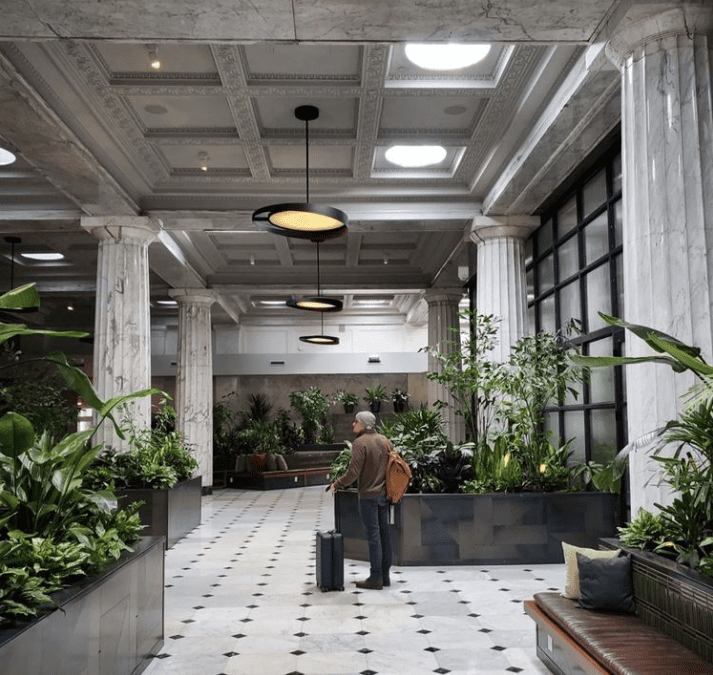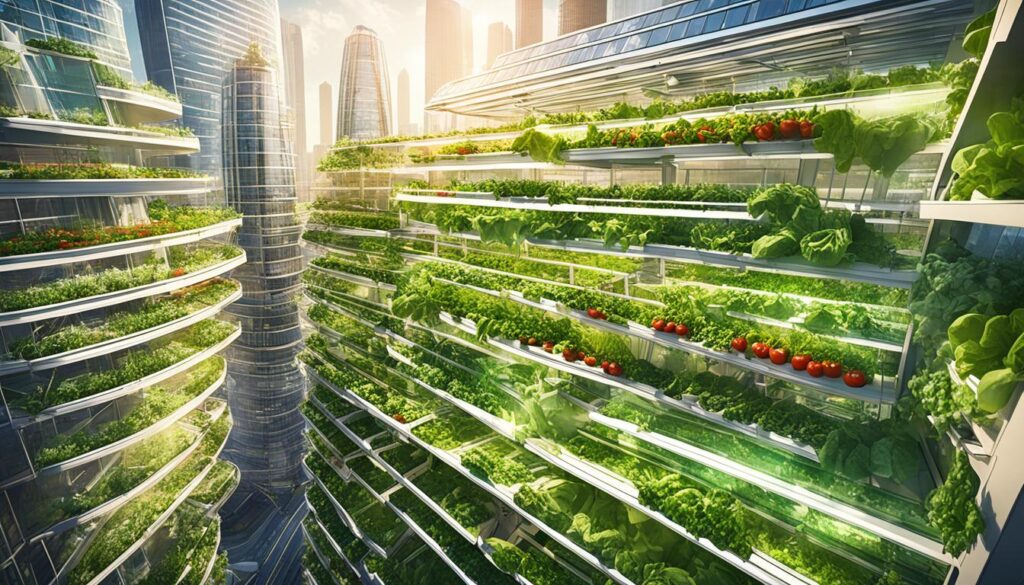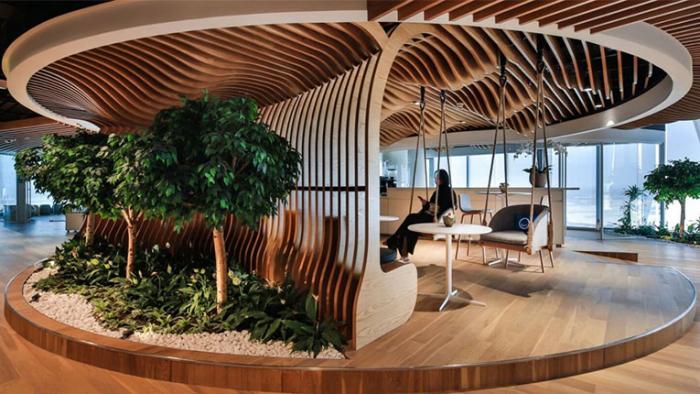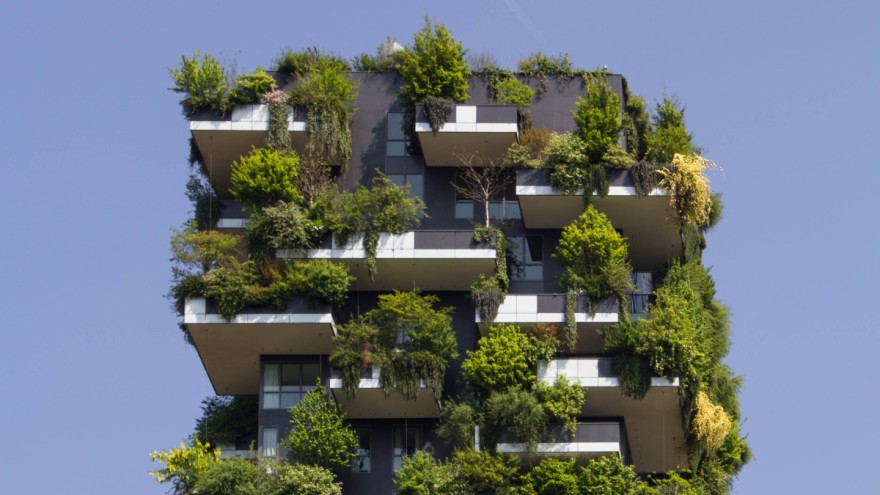The Role of Natural Light in Biophilic Urban Design.
In an era where urban environments often appear disconnected from nature, biophilic urban design emerges as a compelling approach aimed at harmonizing built environments with the natural world.
A fundamental aspect of this concept is natural light, which not only enhances the aesthetic appeal of urban settings but also promotes well-being and sustainability.
This article examines the importance of natural light within biophilic design, its various manifestations, and practical strategies for its integration, while also addressing the challenges encountered in urban settings.
This exploration reveals how the incorporation of natural light can transform cities into healthier, more vibrant spaces.
What is Biophilic Urban Design?
.jpg_00.jpeg)
Biophilic Urban Design represents a transformative approach that effectively integrates natural elements within the urban environment, thereby creating spaces that significantly enhance human well-being through the implementation of nature-based solutions and sustainable design principles, such as the use of natural materials and urban greenery.
This design strategy prioritizes components such as natural light, green architecture, and ecological restoration, which not only foster a sense of place and community engagement but also address pressing urban challenges, including the urban heat island effect, ecological footprint, and environmental sustainability.
By promoting urban biodiversity and enhancing the aesthetic appeal of cities, biophilic design seeks to establish restorative environments that emphasize health-oriented design and the psychological benefits associated with exposure to nature, thereby improving psychological well-being and user engagement.
Through meticulous site selection, spatial orientation, and strategic space planning, urban designs can harness the advantages of nature integration to improve the overall quality of life and livability for residents.
How Does Natural Light Play a Role in Biophilic Urban Design?
Natural light is a fundamental aspect of biophilic urban design and plays a crucial role in enhancing the indoor environmental quality of various spaces. By maximizing daylighting through deliberate architectural design, buildings can achieve visual comfort while minimizing reliance on artificial lighting, resulting in significant energy efficiency improvements.
The incorporation of natural light not only enhances aesthetic appeal but also contributes positively to mental health and productivity, allowing occupants to reap the psychological benefits associated with exposure to nature. Effective design strategies, such as building orientation and the implementation of large windows, are essential for harnessing the full potential of natural light in urban environments.
The presence of sunlight has the capacity to transform an ordinary space into a vibrant one, fostering a vital connection to the outdoors that is essential for occupant well-being.
For instance, the strategic placement of skylights can allow sunlight to penetrate deeper into interior spaces, thereby reducing the need for electric lighting while creating a warm atmosphere that enhances mood and focus. Additionally, the use of light shelves can reflect sunlight further into a building, ensuring that natural light is distributed evenly throughout the space, which further improves comfort and well-being.
Ultimately, when natural light is thoughtfully integrated into architectural designs, it enriches the overall experience for occupants, promoting a healthier and more productive lifestyle.
Why is Natural Light Important in Urban Environments?
Natural light plays a crucial role in urban environments, significantly influencing human well-being, psychological health, and overall wellness. Research has demonstrated that exposure to natural light is associated with enhanced mood, increased productivity, and improved mental health outcomes.
Thus, it is a vital component in developing restorative environments within the often-challenging urban landscape. Furthermore, conducting thorough daylighting analysis during the design phase can lead to optimized space utilization and improved building orientation, ultimately contributing to metrics of urban resilience and sustainability.
As cities continue to evolve, the integration of natural light into urban design becomes increasingly essential for promoting healthier, more connected communities.
What are the Benefits of Natural Light in Urban Design?
The benefits of natural light in urban design are extensive, directly influencing health outcomes, enhancing productivity, and contributing to the aesthetic quality of indoor environments. By facilitating the passage of natural light into buildings, architects can develop visually appealing spaces that significantly improve user experience while also reducing energy consumption.
This emphasis on daylight promotes a vital connection with nature, which plays an essential role in mental well-being and stress mitigation. For example, the Bullitt Center in Seattle, often referred to as the ‘greenest commercial building in the world,’ features strategically placed windows that optimize natural light, thereby enhancing occupant productivity and decreasing reliance on artificial lighting.
Similarly, the Bosco Verticale in Milan exemplifies how integrating vertical gardens with light-filled balconies not only boosts biodiversity but also creates a visually engaging living environment.
These successful implementations highlight the importance of incorporating natural light as a fundamental component of urban design strategies, including daylight harvesting and climate-responsive design, ultimately fostering healthier and more vibrant communities.
What are the Different Types of Natural Light in Urban Environments?
In urban environments, natural light presents itself in multiple forms, each possessing unique characteristics and implications for design.
These forms include direct sunlight, diffused light, and reflected light.
Direct sunlight offers intense illumination and warmth, rendering it suitable for areas intended for outdoor engagement and urban greenery. In contrast, diffused light provides a softer ambiance that enhances visual comfort in interior spaces. Reflected light, meanwhile, can enhance the diffusion of light throughout various areas, thereby optimizing illumination quality while mitigating the harshness associated with direct exposure.
A comprehensive understanding of these types of natural light is crucial for architects and urban planners who seek to design spaces that effectively leverage daylighting.
1. Direct Sunlight
Direct sunlight serves as a significant source of natural light that plays a vital role in urban design by providing essential warmth and illumination in outdoor spaces, thereby enhancing residents’ connection to their environment.
This form of light is instrumental in regulating thermal comfort within buildings, making it an invaluable component in passive solar design and climate-responsive strategies. It is crucial to carefully assess its intensity, as improper management can result in overheating or glare. The use of shading devices or light wells can optimize the benefits of direct sunlight while mitigating potential drawbacks.
Incorporating features such as strategically positioned pergolas, canopies, or green roofs can create inviting spaces that harness solar energy without causing excessive glare.
Additionally, the thoughtful arrangement of windows can facilitate increased sunlight penetration into interior environments, transforming them into bright and lively spaces that promote well-being.
Urban planners are increasingly emphasizing the importance of designing pedestrian-friendly areas that prioritize sunlight exposure, including parks and open plazas. Sunlight not only enhances mood but also fosters social interactions. By integrating structural elements with greenery, cities can develop vibrant microclimates that celebrate direct sunlight while ensuring that comfort and enjoyment remain central to the urban experience.
2. Diffused Light
.jpg_01.jpeg)
Diffused light is characterized by its soft and even illumination, which occurs when sunlight is scattered by clouds, buildings, or other surfaces. This type of natural light is particularly beneficial in urban environments, as it enhances visual comfort and contributes to a positive indoor environmental quality.
The integration of diffused light strategies into urban design not only enhances aesthetic appeal but also promotes sustainability by reducing energy consumption. Urban planners and architects can utilize techniques such as strategically placed skylights, translucent materials, and green rooftops, which facilitate the penetration of natural light deeper into buildings.
In public spaces, the implementation of light-colored pavements and reflective installations can further amplify the diffusion of sunlight, creating brighter and more inviting environments. These design choices not only enhance the overall atmosphere but also play a crucial role in mitigating the urban heat island effect, thereby supporting sustainable development objectives.
3. Reflected Light
Reflected light is generated when sunlight interacts with various surfaces, establishing a distinctive dynamic within architectural and urban design. This interplay of light diffusion can significantly enhance visual aesthetics, thereby contributing to the overall ambiance of a space while optimizing energy use within buildings.
By carefully selecting materials and surfaces that promote light reflection, designers can enhance the quality of light in urban settings, resulting in environments that appear larger and more vibrant. A comprehensive understanding and application of reflected light are essential for developing effective daylighting strategies in urban architecture.
The incorporation of reflective materials such as glass, polished metals, and light-colored surfaces allows for the maximization of natural light, yielding buildings that are not only visually appealing but also decrease the reliance on artificial lighting.
Design elements, including strategically positioned mirrors or reflective water features, can further amplify this effect, transforming urban areas into lively and inviting community spaces. Attention to how light interacts with various textures and colors ensures that the environment remains both functional and aesthetically pleasing, enhancing the overall sensory experience.
As cities continue to evolve, capitalizing on the advantages of reflected light becomes increasingly important for creating sustainable, welcoming, and innovative environments for individuals to live and work.
How Can Natural Light be Incorporated into Biophilic Urban Design?
Incorporating natural light into biophilic urban design necessitates a strategic approach that emphasizes building design, orientation, and the implementation of innovative techniques such as light wells and light shafts.
These architectural features serve to channel sunlight into the deeper areas of buildings, thereby ensuring that even interior spaces receive adequate daylighting, which in turn enhances the overall indoor environmental quality, providing health benefits and nature exposure.
The use of reflective surfaces can further amplify the effects of natural light, cultivating a more vibrant and welcoming atmosphere across both public and private spaces, enhancing the overall aesthetic appeal and visual connection to outdoor spaces.
By integrating these design strategies, urban planners can promote healthier living environments that establish meaningful connections between occupants and nature.
1. Integration of Natural Light into Building Design
The integration of natural light into building design represents a fundamental principle of biophilic urban design, facilitating enhanced space utilization and energy efficiency. By carefully considering the orientation and layout of a building, architects can optimize daylight exposure, thereby reducing reliance on artificial lighting and creating a more inviting atmosphere.
Effective architectural design prioritizes not only visual comfort but also aligns with health-oriented design practices, fostering a connection to the natural environment for building occupants. The use of natural materials and thoughtful spatial planning can further amplify the beneficial effects of natural light within structures, promoting wellness and psychological well-being.
This approach encompasses the incorporation of large windows, skylights, and clerestory designs to allow sunlight to penetrate deeply into interior spaces, illuminating areas that would typically depend on artificial light.
For example, the High Line Hotel in New York exemplifies how expansive glass facades and strategically placed windows can cultivate a bright and airy environment, enhancing the transition between indoor and outdoor spaces.
Additionally, the use of light shelves and reflective surfaces can aid in the even distribution of daylight throughout a room while minimizing glare. These architectural strategies not only promote sustainability but also enhance the mood and productivity of occupants, underscoring the importance of natural light in contemporary building design.
2. Use of Light Wells and Light Shafts
Light wells and light shafts are effective architectural features that facilitate the entry of natural light into deeper areas of buildings, significantly enhancing the quality of indoor environments. These elements are particularly advantageous in densely constructed urban settings where traditional windows may be limited, thus improving daylighting and reducing reliance on artificial lighting.
By integrating light wells and shafts into design strategies, architects can create visually comfortable spaces that foster an inviting atmosphere, ultimately contributing to occupant well-being and energy efficiency.
In urban designs, light wells and shafts serve as strategic components that not only illuminate spaces but also create distinct aesthetic qualities. For example, the ‘Silo Hotel’ in Cape Town, South Africa, features a central light shaft that saturates its interior with natural light, providing a striking contrast to the industrial landscape outside.
Similarly, the ‘High Line’ in New York City exemplifies the benefits of light wells in public spaces, enhancing pedestrian experiences while encouraging plant growth along its pathways.
By employing these design strategies, urban planners can ensure that buildings are not only functional but also conducive to healthier and more vibrant living and working environments.
3. Utilization of Reflective Surfaces
The use of reflective surfaces in architectural design serves as a critical strategy for maximizing the advantages of natural light, thereby enhancing both daylighting and visual aesthetics within urban environments.
By strategically incorporating reflective materials such as mirrors, polished metals, or glass, architects can significantly amplify natural light, resulting in a more luminous atmosphere that appears larger and more welcoming. This method not only enhances the overall indoor environment but also contributes to energy efficiency by decreasing reliance on artificial lighting during daylight hours.
For example, the application of reflective glass in the design of One World Trade Center in New York City effectively harnesses the abundant sunlight that permeates the cityscape, creating both an iconic silhouette and a well-lit interior.
Similarly, the Pavilion of Reflections at the Venice Biennale employs mirrored surfaces to seamlessly integrate its inviting ambiance with the surrounding landscape, fostering interaction and appreciation of nature.
These case studies not only underscore the aesthetic value of reflective designs but also illustrate their practical implications for energy conservation and user experience in urban settings, making them an essential consideration in contemporary architectural practices, promoting sustainable design and ecological design.
What are the Challenges of Incorporating Natural Light in Urban Design?
.jpg_10.jpeg)
Incorporating natural light into urban design poses several challenges, primarily due to constraints such as limited space, urban pollution, and the necessity to balance daylighting with energy efficiency, while maintaining resilience and sustainability.
In densely populated areas, the presence of tall buildings and narrow streets can obstruct sunlight, hindering the attainment of sufficient daylight levels within interior spaces.
Additionally, urban pollution can diminish the quality of natural light, adversely affecting its efficacy and reducing its associated health benefits.
Accordingly, urban planners and architects must address these challenges by employing innovative design strategies that prioritize both access to natural light and sustainability.
1. Limited Space for Natural Light
Limited space presents a substantial challenge to the integration of natural light in urban design, as closely packed buildings frequently restrict sufficient daylight access. This issue requires meticulous consideration of building orientation and spatial planning to ensure that natural light can penetrate further into structures.
Innovative design solutions, such as the implementation of light wells or strategically positioned windows, can effectively alleviate the impacts of spatial constraints and improve the overall quality of indoor environments.
Urban planners and architects should investigate creative strategies to optimize daylight access, including the incorporation of reflective surfaces or the use of transparent materials that diffuse light.
Cities such as Melbourne have successfully incorporated vertical gardens and skylights in narrow alleyways, enabling natural light to illuminate previously dim areas. Moreover, the establishment of zoning regulations that promote lighter façade treatments can enhance the brightness of urban interiors, thereby reducing reliance on artificial lighting.
By drawing from these best practices and tailoring approaches to the unique characteristics of each location, urban spaces can be transformed into more inviting and healthier environments for inhabitants, fostering a stronger connection to the outdoors.
2. Urban Pollution and its Effect on Natural Light
Urban pollution has a significant impact on the quality of natural light, hindering its capacity to provide the health benefits and aesthetic qualities essential to biophilic design. Pollutants such as smog and particulate matter can degrade light quality, resulting in diminished effectiveness of daylighting and negative consequences for indoor environmental quality.
As urban areas continue to encounter environmental challenges, it is imperative for architects and urban planners to prioritize health-oriented design strategies that address pollution while facilitating access to natural light and enhancing urban resilience.
Given these challenges, it is critical to explore innovative solutions that not only mitigate pollution but also improve the penetration of natural light in urban spaces.
The implementation of green roofs, urban forestry, and reflective building materials can effectively counteract the effects of pollutants, allowing increased sunlight to filter through and illuminate interior spaces. Additionally, incorporating open airways and light wells in building designs fosters the movement of fresh air and natural light.
These strategies not only enhance energy efficiency but also contribute to improved physical and mental health for urban residents, underscoring the necessity for a harmonious integration between the built environment and nature, fostering cultural identity and livability.
3. Balancing Natural Light with Energy Efficiency
Balancing the incorporation of natural light with energy efficiency is a critical consideration in urban design. Excessive sunlight can lead to overheating and an increased reliance on cooling systems, necessitating a thoughtful approach to building design that optimizes daylighting while maintaining thermal comfort and visual comfort.
Architects must utilize shading devices, appropriate glazing techniques, and strategic building orientation to harness the benefits of natural light without compromising energy efficiency and visual comfort.
Such strategies not only enhance the aesthetic appeal of urban spaces but also promote sustainability by reducing overall energy consumption. The integration of features such as light wells and reflective surfaces can improve natural illumination in deeper spaces, while advancements in smart glass technology enable dynamic control of light penetration and light transitions.
Furthermore, the implementation of green roofs, community gardens, and walls can mitigate heat gain and improve air quality, creating a harmonious balance between access to light and energy use. Ultimately, these approaches contribute to healthier living environments, fostering a sense of well-being among urban residents and promoting urban biodiversity.
How Can Biophilic Urban Design Benefit from Natural Light and Green Architecture?
The incorporation of natural light in biophilic urban design can significantly enhance mental health, productivity, and psychological well-being, while concurrently fostering a heightened sense of community well-being.
By prioritizing natural light, designers create environments that encourage a connection to nature and nature exposure, resulting in improved psychological outcomes and overall occupant satisfaction.
Additionally, the integration of daylighting in urban spaces can promote social interaction, user engagement, and engagement, thereby facilitating healthier lifestyles and enhancing the quality of life for residents.
1. Improved Mental and Physical Well-being
The incorporation of natural light in urban design significantly contributes to enhanced mental and physical well-being, fostering restorative environments that promote health, vitality, and psychological restoration.
Research indicates that individuals working in environments abundant in natural light report elevated levels of concentration and productivity. This phenomenon can be elucidated through the principles of biophilic design and environmental psychology, which underscore the interconnectedness of nature and the human experience.
A 2018 study demonstrated that classrooms with sufficient sunlight not only facilitated improved learning outcomes but also positively influenced students’ emotional states, thereby supporting their social development and enhancing the overall human experience.
By prioritizing natural light in their designs, urban planners not only align with these principles but also enhance the overall quality of life for residents, making urban areas more livable and conducive to well-being, comfort, and livability.
2. Increased Energy Efficiency
.jpg_11.jpeg)
Incorporating natural light into urban design significantly enhances energy efficiency by reducing the reliance on artificial lighting and lowering overall energy consumption. Through the optimization of daylighting strategies, architects are able to create buildings that not only utilize natural light effectively but also adhere to sustainability and sustainable design metrics that are increasingly critical in contemporary design.
This approach to energy efficiency is in alignment with broader objectives of environmental sustainability and the reduction of ecological footprints in urban developments, promoting overall sustainability practices.
To realize these advantages, urban planners and architects have adopted specific strategies, including:
- the careful orientation of windows,
- the implementation of light shelves,
- and the incorporation of skylights.
For example, case studies such as the Bullitt Center in Seattle have demonstrated substantial energy savings by maximizing access to daylight, achieving a reduction in energy use of up to 80% compared to conventional office buildings.
These innovative practices highlight the potential of integrating natural light not merely as a design element but as a fundamental principle in energy-efficient architecture.
3. Enhanced Aesthetics and Connectivity with Nature
Natural light significantly enhances the aesthetic appeal of urban spaces, fostering a strong connection to nature that enriches the user experience. By integrating ample daylight into architectural design, these spaces become more inviting and visually engaging, promoting a sense of harmony between the built environment and the natural world, enhancing the overall human-nature relationship.
This connection not only improves the overall architectural aesthetics but also fosters a deeper appreciation for nature within urban settings, promoting the principles of biophilia and biophilic design.
Notable examples of urban developments that effectively utilize natural light include the High Line in New York City and the Gardens by the Bay in Singapore.
The High Line, which is a repurposed elevated railway, demonstrates how sunlight filters through strategically designed openings in its landscape, creating dynamic visual experiences throughout its length. Conversely, the iconic domes of Gardens by the Bay allow natural light to illuminate tropical flora, thereby enhancing visitors’ connections to nature.
These examples illustrate that thoughtful daylighting not only beautifies urban landscapes but also promotes well-being, encouraging individuals to engage more fully with their surroundings and fostering user well-being.
Frequently Asked Questions
What is biophilic urban design?
Biophilic urban design is an approach to city planning that incorporates nature and natural elements into the built environment.
What is the role of natural light in biophilic urban design and green architecture?
Natural light plays a crucial role in biophilic urban design as it helps to connect people with nature, improve their overall well-being, and enhance comfort.
How does natural light affect our health in urban environments?
Exposure to natural light has been linked to various health benefits, such as improving mood, reducing stress, and regulating our circadian rhythm and natural rhythms. In urban environments, where access to nature is limited, incorporating natural light can help to mitigate these negative effects.
What are some examples of biophilic urban design that utilize natural light?
Some examples include green roofs and facades, atriums, large windows, and indoor plants that allow for ample natural light to enter buildings. These design elements not only bring in natural light, but also provide views of nature and greenery, further enhancing the biophilic experience and promoting urban biodiversity.
Why is biophilic urban design important for sustainability?
Biophilic urban design can contribute to a more sustainable city by reducing energy consumption, improving air quality, and promoting biodiversity. By utilizing natural light, buildings can reduce the need for artificial lighting and thus decrease their carbon footprint, enhancing overall sustainability and resilience.
How can biophilic urban design be implemented in existing cities?
Biophilic urban design can be incorporated into existing cities through retrofitting buildings with green roofs, adding green spaces and parks, incorporating natural elements into building facades, and implementing adaptive reuse and passive design strategies. City planners can also prioritize natural light in building codes and regulations to ensure new developments incorporate these design principles.

I’m Bruno, an architect with a deep passion for Biophilic Design in Urban Architecture. Throughout my career, I’ve focused on integrating natural elements into urban planning, and I created this site to share my insights and foster a deeper understanding of how biophilic principles can significantly enhance urban living. Dedicated to sustainable development, I continually explore innovative design solutions that promote both environmental and human well-being in city landscapes.














Publicar comentário